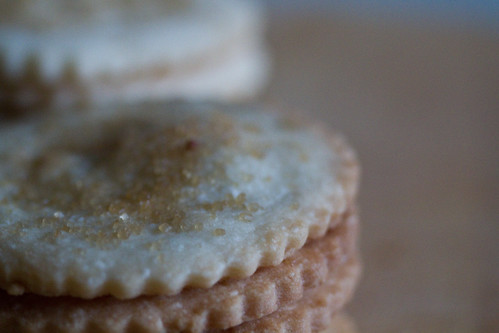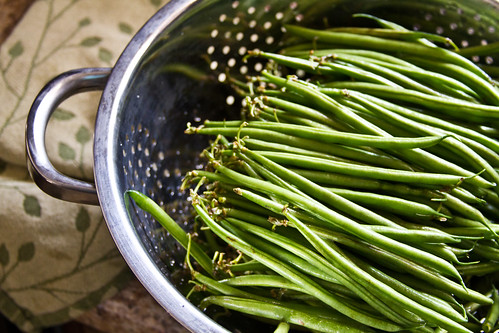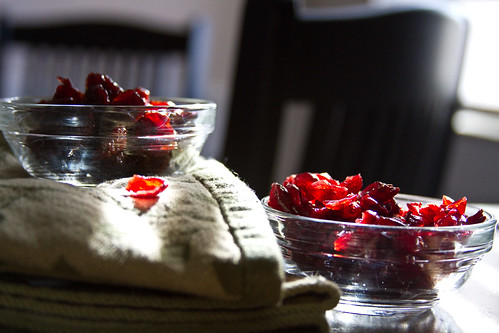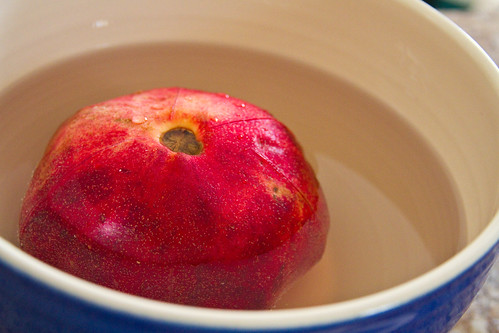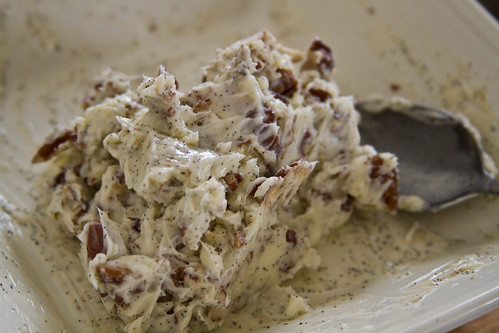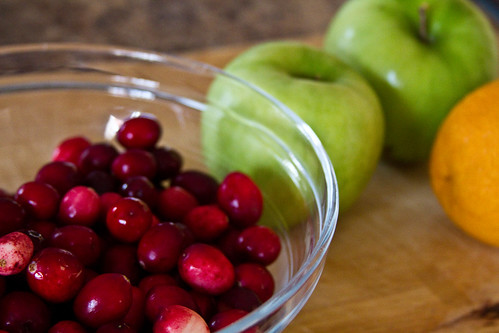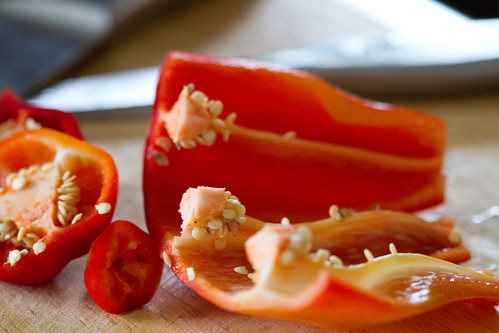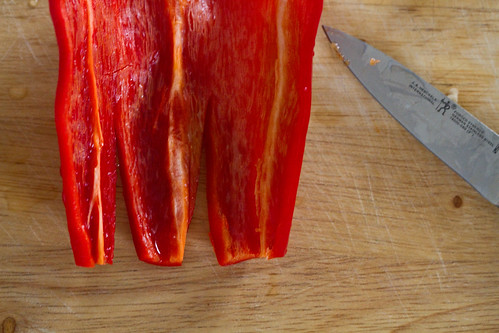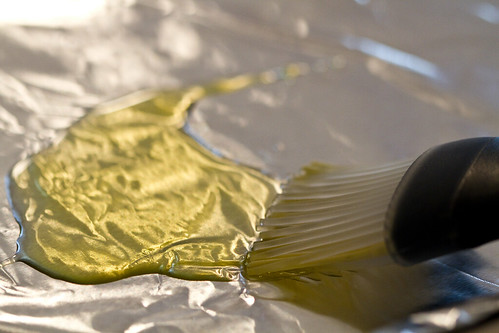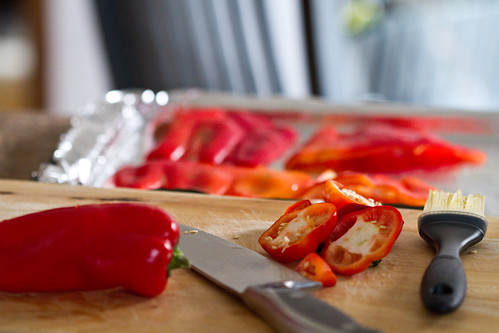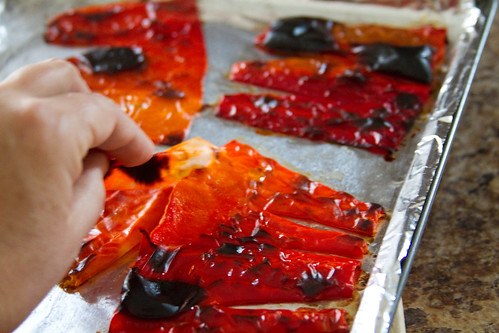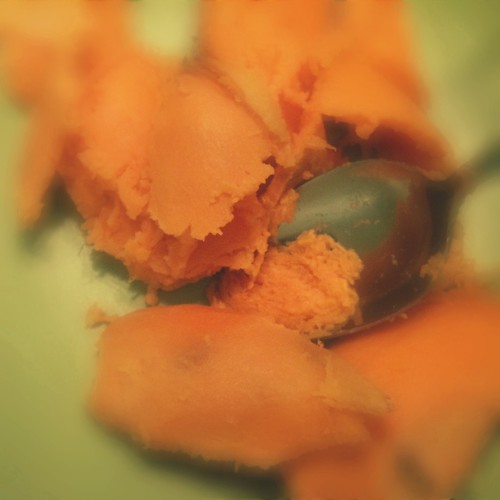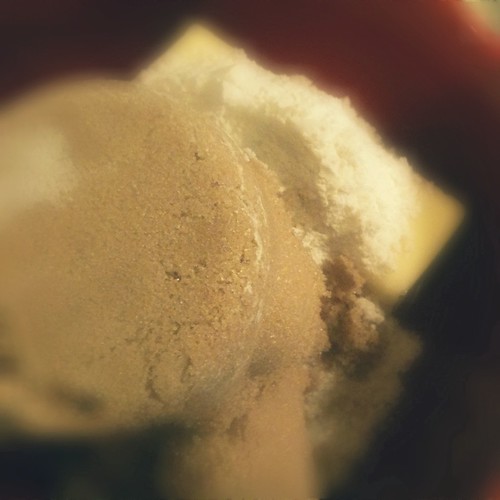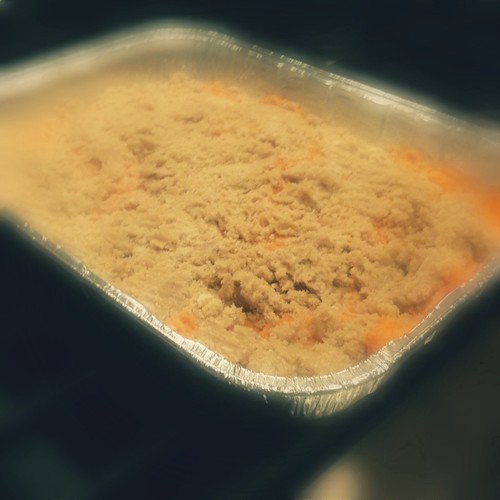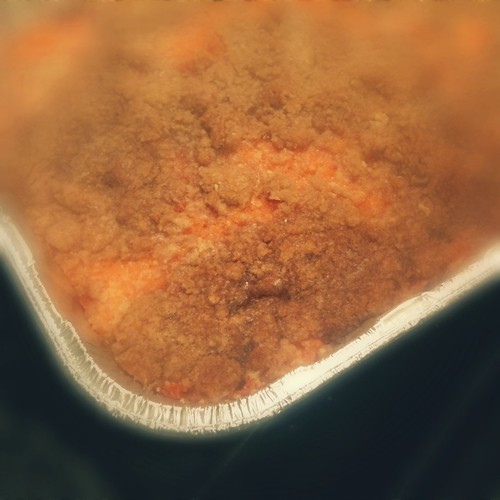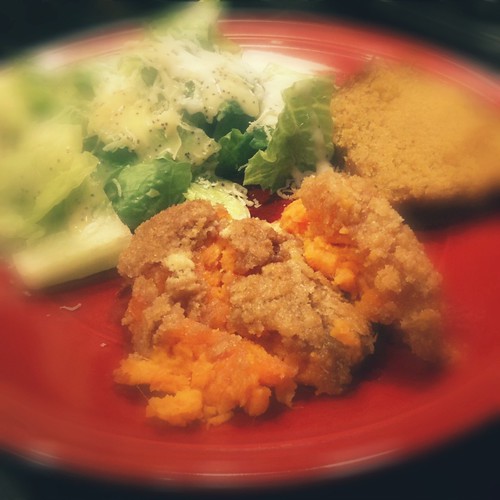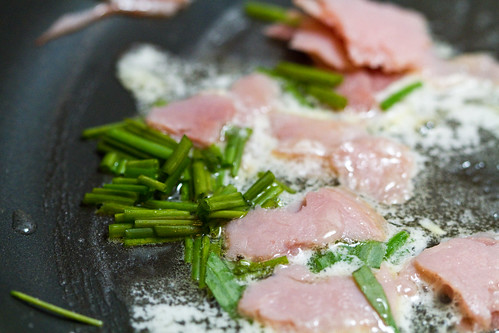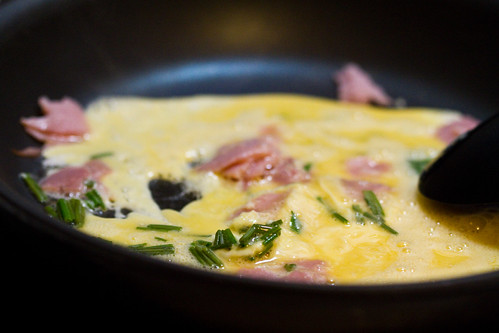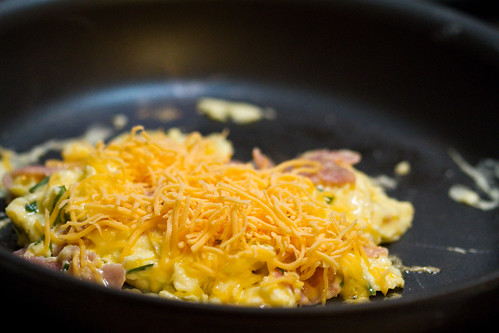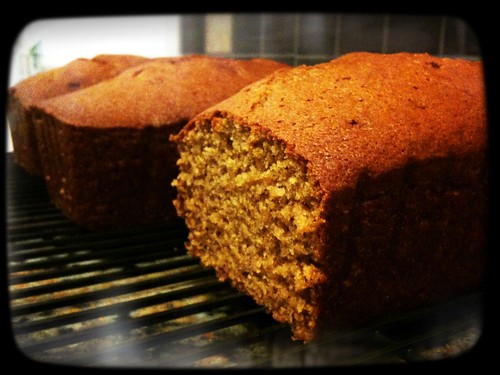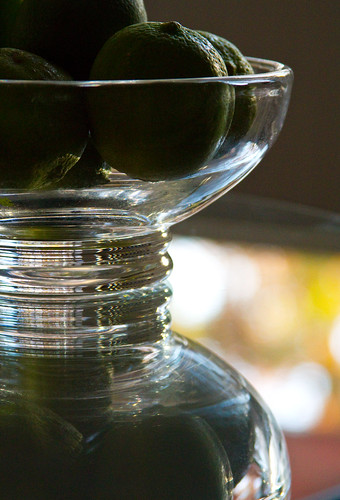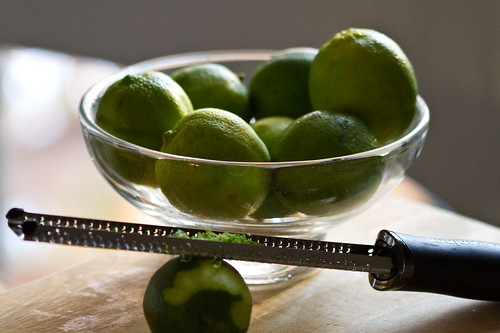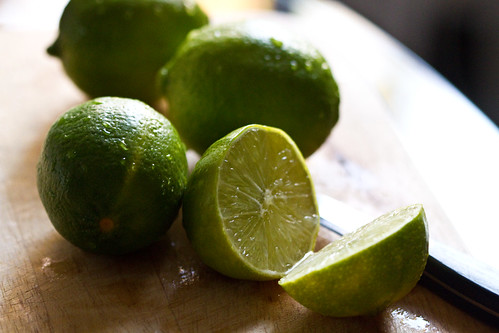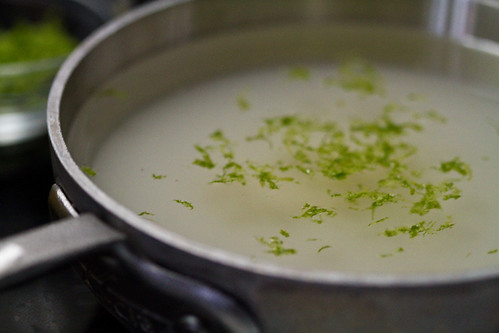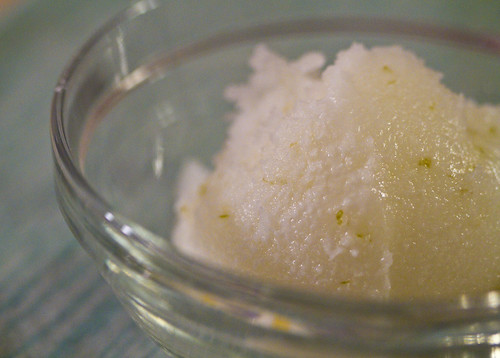Okay peeps, get a load of this:
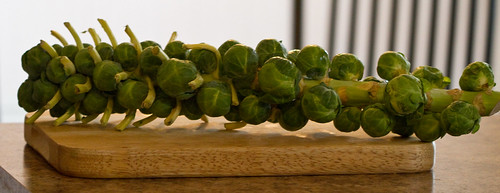
Brussels sprouts still on the stalk. I got them, um, yeah, I got them because I think they'll keep until Thanksgiving better than the others. Yeah. That's right.
That was my excuse anyway, when we picked them up at the market yesterday. And then, of course, Doug busted me on that one.
He said,
"So, you've just really always wanted to buy them like that because it's kind of weird looking."
"Um. Okay, you're right. STILL, I think they'll stay fresher longer."
"And I bet you're going to take a picture of them, aren't you."
"Um. Well, I might, now that you mention it. Actually that might be a pretty good idea. I'll think about it. And I STILL think they'll stay fresher."
Dear reader, I have no idea if they will stay fresher. But they are kind of cool looking, right? And I got them because one of the new recipes I will be trying out this Thanksgiving is
Roasted Brussels Sprouts with Pomegranates and Vanilla-Pecan Butter, courtesy of Mr. Bobby Flay from the
Pioneer Woman's Thanksgiving Throwdown episode.
If you take a look at the recipe, you will see that one of the ingredients is Pomegranate Molasses. Yikes! I went to all of my favorite gourmet markets and fancy-schmancy places I could think of to find them and no one seemed to know what I was talking about. People kept directing me to pancake syrups, so I would look there; I looked in juices and jams; I looked in ethnic aisles, as Pomegranate Molasses are a typical Middle Eastern ingredient. No luck.
I had found a
recipe, thank you very much most wonderful Mr. Alton Brown, to make pomegranate molasses at home, since they are difficult to find. And THAT is what I did, er, attempted to do, today.
It sounds oh so simple. Four cups of pomegranate juice, some sugar, some lemon, cook on medium high until the sugar is dissolved, turn down the heat and cook on medium low until it is reduced down to one cup, approximately 70 minutes.
I had qualms about the whole thing beginning with pomegranate juice itself. I was sure to get REAL juice, not from concentrate, and tried not to visibly wince at paying a little over $7.00 for a bottle of juice. I expected something beautiful and clear and ruby colored -- you know, kind of like cranberry juice cocktail; instead the juice was a bit thick and opaque and, well, an off shade of pinkish gray that I didn't particularly like. I tasted it -- not yummy in my book, but no real whang, either. Just to be sure, I did an internet check on the pomegranate juice taste tests and found that a lot of people think that pomegranate juice in general tastes fishy.
The bar on my expectations was lowered quite a bit at this point. If you are in the southeastern United States and heard a soft thud, THAT was my bar. Lowering.
Once I actually started cooking, I was faced with another dilemma. How in the world would I be able to tell if the juice had reduced down from four cups to one cup? I needed something food proof and heat proof that I could stick in the pan to measure the juice level.
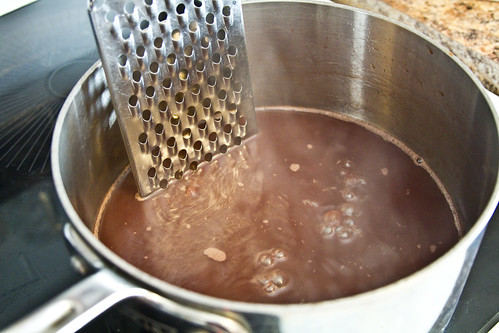
Don't laugh. It worked. I just counted the holes and started cooking.
Problem number three.
At the end of 70 minutes of cooking on medium low, my mix had hardly reduced AT ALL. My stove is electric,and I'm betting that Mr. Alton Brown (who I dearly love) has a gas stove, which might account for the difference. So I turned the heat up until the mix simmered slightly and kept on cooking. At the end of 60 MORE minutes, it looked like I was nearly there.
And that's when it all broke loose.
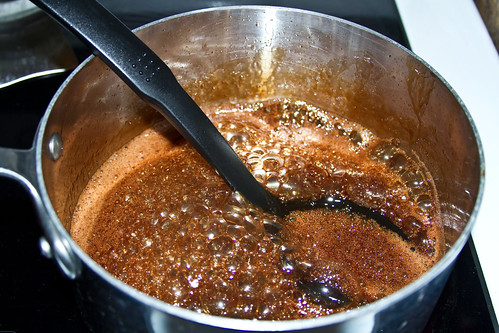
Within moments some mystical line of heat and sugar was crossed and the simmer turned into a froth of bubbles that didn't break back down into the syrup, but rose and mounted higher and higher in the saucepan until I could not EVEN SEE how much syrup there really was -- not even with my handy dandy cheese grater measuring device. And that's when I realized things were quickly progressing from pomegranate molasses to pomegranate brittle and I'd better get the saucepan off the heat and I mean right now and that's exactly what I did and not a moment too soon.
Whew.
UNFORTUNATELY, when I spooned the
mess molasses out into the jar, the jar that should have held exactly one cup, the amount fell far short of the mark. I had fallen into the trap of over reduction.
That's when I grabbed my car keys, and in a desperate attempt to save my last chance of making Mr. Bobby Flay's wonderful throwdown Thanksgiving Brussels Sprouts, I drove two whole miles to a little Mediterranean market (that I'd never been into before) where I walked into the store, down the very first likely aisle, straight to - wait for it - real pomegranate molasses.
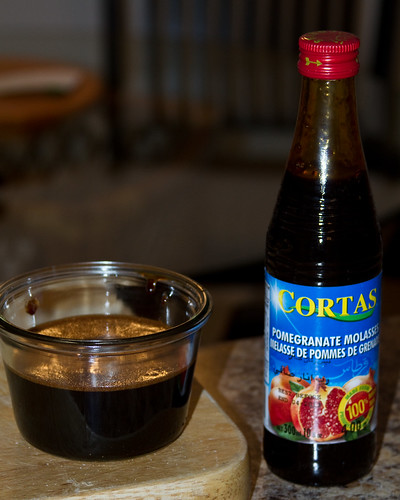
On the left, homemade pomegranate molasses (taffy), costing over 2 1/2 hours of time and about $8 in ingredients.
On the right, the wonderful store bought pomegranate molasses, bought for
$3.54 -- you heard me. Three and a half dollars WITH tax.
Gotta love the holidays!
On more time -- here's the recipe for Mr. Bobby Flay's
Roasted Brussels Sprouts with Pomegranates and Vanilla-Pecan Butter
http://www.foodnetwork.com/recipes/bobby-flay/roasted-brussels-sprouts-with-pomegranates-and-vanilla-pecan-butter-recipe/index.html
(I will let you know at the end of the week how this one turns out!)
and here's Mr. Alton Brown's recipe for
Pomegranate Molasses, which are probably wonderful when cooked by someone who knows what he/she is doing.
http://www.foodnetwork.com/recipes/alton-brown/pomegranate-syrup-or-molasses-recipe/index.html
P.S. I WILL try making this again, by the way. It's a matter of principle.





